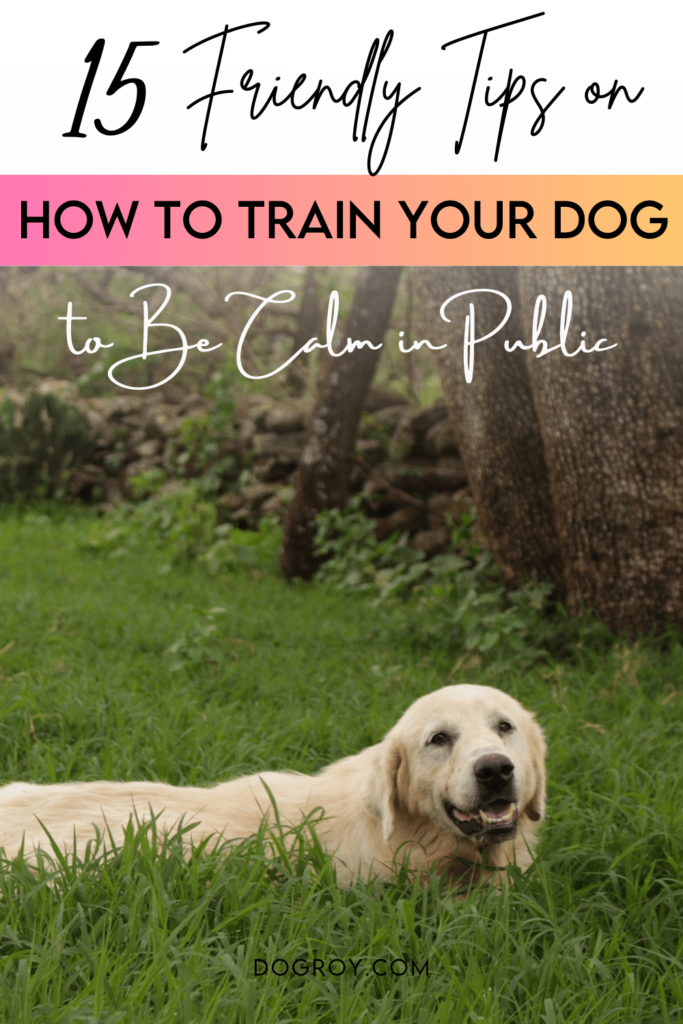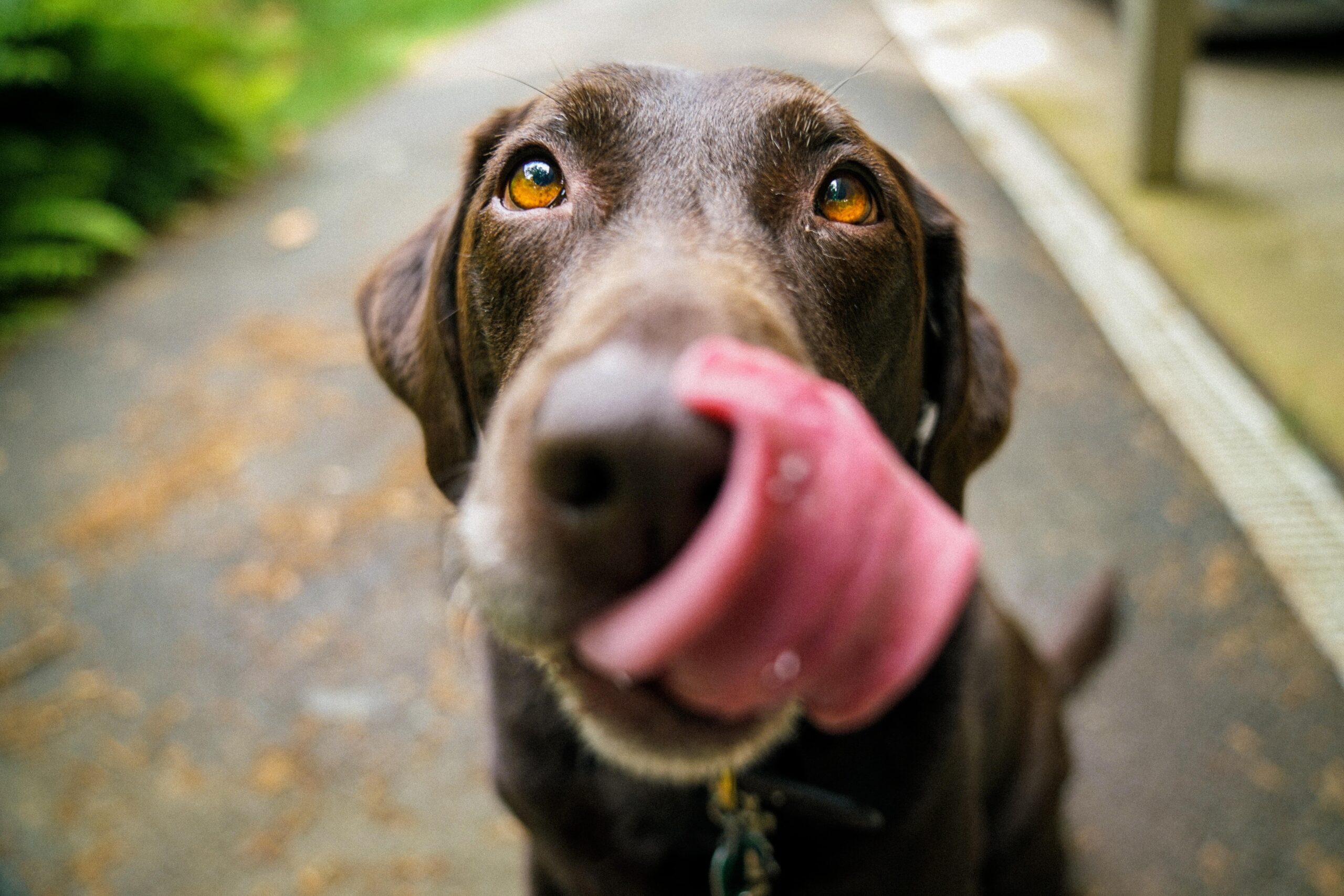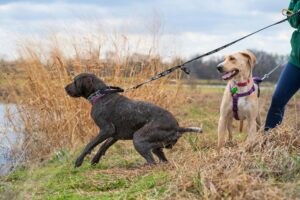Stepping out into the world with your furry friend is meant to be a fun time, but getting your dog to stay calm in public can be a bit tricky.
Don’t worry!
This guide has got your back with 15 super practical tips on How to Train Your Dog to Be Calm in Public.
From busy parks to crowded sidewalks, these tricks will help you teach your dog to chill out, making your outings a breeze for both of you.
Table of Contents
Cultivating Canine Calmness: How to Train Your Dog to Be Calm in Public

1] Start with Familiar Environments
Initiate your dog’s training journey in familiar environments to ensure a smooth transition to public spaces.
Gradual exposure to new surroundings is crucial for acclimatization, allowing your dog to build confidence and exhibit calm behavior when faced with novel stimuli.
Begin in quieter settings and progressively introduce more stimuli, creating a solid foundation for future public outings.
2] Positive Reinforcement
Positive reinforcement is a powerful tool in shaping your dog’s behavior.
When your dog exhibits calmness in public, promptly reward them with treats, praise, or affection.
This association between serenity and positive rewards reinforces the desired behavior, motivating your dog to maintain composure even in challenging environments.
Tip: “Offer treats, praise, or affection when your dog remains composed in public, reinforcing the desired behavior.”
3] Practice Basic Commands
Ensure your dog is proficient in fundamental commands like “sit” and “stay.”
These commands provide a foundational level of control, enhancing your ability to manage your dog in public spaces.
A dog well-versed in basic obedience commands is more likely to feel secure and respond appropriately, contributing to a positive and controlled experience during outings.
4] Gradual Exposure to Distractions
Expose your dog gradually to various distractions encountered in public spaces.
Begin with mild distractions and progressively increase the level of exposure.
This systematic approach builds resilience in your dog, allowing them to adapt to different stimuli while maintaining composure.
Gradual exposure is key to preventing overwhelm and promoting a calm response.
• Gradually expose your dog to distractions in public spaces • Start with mild distractions and increase exposure progressively • Systematic approach builds resilience, helping them adapt • Prevents overwhelm and promotes a calm response to different stimuli
5] Create Positive Associations
Make public outings enjoyable experiences for your dog by associating them with fun and relaxation.
Incorporate activities your dog loves, play games, or bring their favorite toys.
These positive associations contribute to your dog viewing public spaces as places for enjoyment, reinforcing calm behavior during excursions.
6] Regular Exercise Routine
Prioritize regular exercise for your dog to channel excess energy.
A well-exercised dog is more likely to remain calm in public settings.
Consider engaging in a brisk walk or play session before heading to crowded places, allowing your dog to release pent-up energy and approach public outings with a calmer demeanor.
Tip: “A well-exercised dog is more likely to remain calm in public; consider a brisk walk or play session before crowded places.”
7] Use a Comfortable Leash and Harness
Invest in a comfortable leash and harness to provide a sense of security for your dog.
A well-fitted harness minimizes anxiety and offers you better control in public spaces.
The right gear contributes to your dog’s comfort, promoting a more relaxed and calm state during outings.
8] Quiet Time in Public
Incorporate short breaks during public outings to introduce moments of quiet time.
Find a peaceful spot, encourage your dog to relax, and offer gentle strokes.
These calm breaks reinforce the idea that being serene is rewarding, allowing your dog to recharge and maintain composure in dynamic environments.
In the pauses of calmness, your dog discovers the serenity within, making public outings a tranquil interlude
9] Enlist the Help of a Calm Dog Companion
Whenever possible, expose your dog to a calm and well-behaved canine companion.
Dogs often learn by observing others, and a calm companion can serve as a positive influence during public outings.
Social learning contributes to your dog’s ability to navigate various situations with composure, guided by the behavior of their canine peer.
10] Desensitization Techniques
Implement desensitization techniques to gradually expose your dog to various stimuli encountered in public.
Controlled exposure, coupled with positive reinforcement, minimizes sensory overload.
Whether it’s crowds, noises, or unfamiliar scents, systematically introducing your dog to these stimuli helps them remain calm and focused in diverse environments.
Tip: “Controlled exposure and positive reinforcement minimize sensory overload, fostering a calm response.”
11] Maintain Calm Body Language
Dogs are highly attuned to human body language.
Maintain calm and relaxed body language to convey a sense of security to your dog.
Your demeanor significantly influences your dog’s behavior, fostering a calm atmosphere during public outings.
Leading by example sets the tone for your dog’s behavior and helps them feel more at ease in different settings.
12] Regular Socialization
Regular socialization is integral to building your dog’s confidence.
Expose them to various people, animals, and environments to enhance their comfort and security in social settings.
A confident dog is more likely to remain calm in public, as they feel at ease and assured in different social scenarios.
• Regular socialization builds your dog's confidence • Expose them to people, animals, and environments for comfort • Enhances security in social settings, promoting calm behavior • A confident dog feels at ease and assured in various scenarios.
13] Seek Professional Training
Consider seeking professional training for tailored guidance in addressing specific challenges.
A certified dog trainer can provide expert advice, assess your dog’s individual needs, and offer personalized strategies for training them to be calm in public.
Professional guidance enhances the effectiveness of your training efforts, ensuring a positive and successful experience for both you and your dog.
- 10 Tips for Perfect Dog Sleeping Positions with OwnerSharing your sleeping space with your furry friend can be… Read more: 10 Tips for Perfect Dog Sleeping Positions with Owner
- 10 Tips on How to Calm Down a Dog with AnxietyCaring for a dog with anxiety can be challenging, but… Read more: 10 Tips on How to Calm Down a Dog with Anxiety
- 11 Effective Tips on How to Stop Dog Pulling on HarnessIs your dog turning your peaceful walks into a tug-of-war?… Read more: 11 Effective Tips on How to Stop Dog Pulling on Harness
- 11 Reasons Behind Why Does My Dog Breathe Fast?As devoted pet parents, it’s natural for us to become… Read more: 11 Reasons Behind Why Does My Dog Breathe Fast?
14] Use Calming Aids
Explore natural calming aids to support your dog’s calmness in public.
Pheromone diffusers, calming sprays, or herbal supplements can provide subtle calming effects.
These aids can be particularly helpful in managing anxiety and promoting relaxation during public outings, contributing to a more positive experience for your dog.
Tip: “These aids provide a subtle calming effect, making public outings more manageable for your dog.”
15] Patience and Consistency
Training your dog to be calm in public is a gradual process that requires patience and unwavering consistency.
Celebrate small victories along the way and be patient with your dog’s progress.
Building a lasting bond involves understanding their individual needs and providing gentle guidance, ensuring a positive and enduring relationship between you and your canine companion.
How to Train Your Dog to Be Calm in Public: FAQs
How long does it take to train a dog to be calm in public?
Training timelines vary, but consistent efforts can yield positive results within a few weeks. The duration may depend on your dog’s age, temperament, and previous experiences.
Can all dogs be trained to be calm in public?
Yes, with patience and consistent training, most dogs can learn to be calm in public. Tailor your approach to your dog’s unique personality and needs for effective results.
Is age a factor in training a dog to be calm in public?
While age can influence learning, dogs of all ages can benefit from training to be calm in public. Puppies and older dogs alike can adapt with the right guidance.

Conclusion:
So there you have it!
The journey of teaching How to Train Your Dog to Be Calm in Public is all about making your time together enjoyable.
With these 15 easy to follow tips, just keep things consistent and be patient.
Use positive vibes, get your pup used to new places bit by bit, and you’ll turn your dog into a chill and well-behaved sidekick.
Enjoy the process, celebrate every little win, and relish those awesome moments of calm in public with your amazingly trained dog by your side.
Also Read : How to Toilet Train a Puppy in 7 Days









